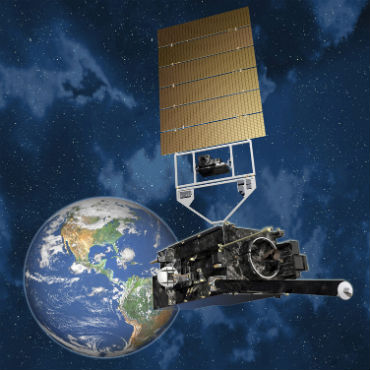Satellite launch delay extends time with no backup

A six-month launch delay for NOAA's next-generation geostationary satellites could mean the agency will violate its policy of always having a backup weather satellite in orbit.

An artist's rendering of a GOES satellite.
A six-month launch delay for the National Oceanic and Atmospheric Administration's next-generation geostationary satellites could mean the agency will violate its policy of always having a backup weather satellite in orbit.
NOAA has two operational geostationary satellites providing large-scale imagery of the east and west U.S. coastlines from orbits 22,000 miles above the Earth, and a backup through its Geostationary Operational Environmental Satellite (GOES) program.
Those spacecraft will be replaced by a new crop of satellites from the $11 billion GOES-R program, but the agency has postponed the launch date from October 2015 to March 2016.
"The slip might not appear significant, but it is," said Dave Powner, director of IT management issues for the Government Accountability Office. "It extends the period of time where there is no operational backup satellite. Having a backup is essential to NOAA policy. Backup satellites have been used several times by NOAA over the years."
Powner testified with officials from NOAA and NASA before the House Science, Space and Technology subcommittees on Environment and Oversight Sept. 19. On the same day, GAO released two reports critiquing NOAA's GOES-R program and another acquisition to replace its aging crop of polar-orbiting satellites.
According to the GAO report, there is even more cause for concern. An independent review team calculated a 36-percent chance that one of the two operational geostationary satellites -- GOES -14 or -15 -- will fail prematurely. Any failure would lengthen the time operational satellites orbit without backups.
GOES-13, which temporarily failed in June after a micrometeoroid impact that required NOAA officials to bring GOES-14 online, is expected to be retired in early 2015. The issue forced NOAA to carry out its backup plan, which allowed forecasters to continue receiving satellite imagery and data "necessary to issue life-saving warnings for tornadoes and floods," according to a NOAA statement in June. The failure was of particular importance because of its timing: It occurred at the beginning of hurricane season, when geostationary satellites produce some of their most important data.
But a launch delay of the next GOES-R satellite puts in jeopardy any backup plans, much to the dismay of lawmakers.
"I can't imagine going into a mission without a backup," said Environment Subcommittee Chairman Chris Stewart, (R-Utah), a former Air Force pilot. "It was completely unacceptable if there [are] not multiple backups, yet that is exactly as we are."
There is good news, however, for GOES-R.
Mary Kicza, assistant administrator for Satellite and Information Services at NOAA, said four of six major instruments have completed environmental testing and the spacecraft bus's design review is completed. Despite the launch delay, Kicza told lawmakers that personnel are still working on a schedule that aims for an October 2015 launch.
NOAA intends to comply with recommendations made by GAO in the Sept. 19 report. NOAA will address weaknesses in managing reserves and scheduling for the GOES-R satellite program, and will address shortfalls in contingency planning.
A geostationary orbit is one that matches the speed of the Earth's rotation, keeping the satellite in the same location relative to the Earth.






